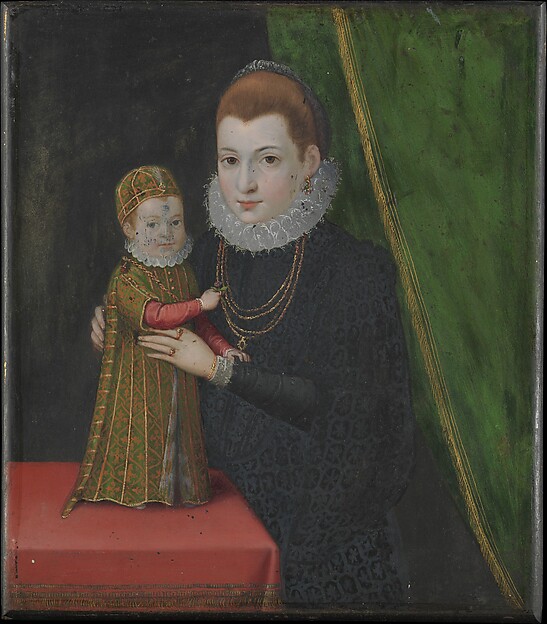Style of 16th-century British Painter (19th century)
The painting appeared in the 1907 sale of the first Duke of Fife, where it was acquired by the London book and autograph dealer Pearson, who sold it to Morgan as a contemporary portrait of Mary, Queen of Scots, with her son, James. Mary (1542–1587), born a week before the death of her father, was betrothed in 1548 to the dauphin of France, later François II, whom she married in 1558. He died in 1560. Her second marriage, in 1565, was to her cousin Henry Stewart, Lord Darnley. Their son was born at Edinburgh Castle in 1566 and later reigned as James VI of Scotland and I of England until his death in 1625.
The portrait has not been exhibited at the Museum since at least the 1930s, suggesting that there was even then some question as to its authenticity. When David Piper saw it in 1962, he ascribed it to the Isle of Thanet Forger, who he said was active about 1910 painting Elizabethan subjects in this same size. Oliver Millar concurred in 1991 that it was a forgery. The following year Hubert von Sonnenburg pointed out that “the glazing, with much black, imitates an aged layer, mitigating against an early date,” but noted that owing to the unusual stone support, other evidence was not available (verbal opinions recorded in departmental files).

No comments:
Post a Comment